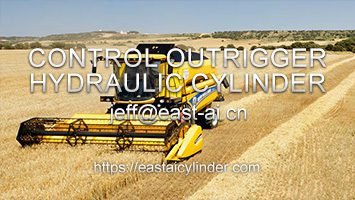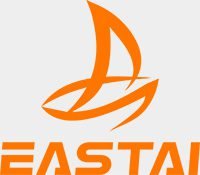Hydraulic Top Link: Key Upgrade for Agriculture and Construction
In modern agricultural and construction machinery, the application of hydraulic systems has significantly improved operational efficiency and productivity. The Hydraulic Top Link, as one of the core components of these machines, has become a key tool for enhancing work precision and operational convenience. This article delves into the working principles, advantages, application scenarios, purchasing guidelines, and maintenance practices of Hydraulic Top Links, providing a comprehensive understanding of their importance and application in modern machinery.
Understanding the Hydraulic Top Link
A Hydraulic Top Link is a mechanical device that uses hydraulic fluid pressure to control extension and retraction, primarily used in the three-point hitch system of tractors and other agricultural machinery. The hydraulic system drives the piston rod to move by pressurizing hydraulic fluid with a hydraulic pump, thereby adjusting the angle and position of the attached implements or other equipment.
The Hydraulic Top Link typically comprises several key components:
Hydraulic Cylinder: The core part of the Hydraulic Top Link, it houses the hydraulic fluid and drives the piston rod through pressure from the hydraulic pump.
Piston Rod: The piston rod inside the hydraulic cylinder moves under pressure to adjust the angle and position of the attached equipment.
Valve System: This controls the flow direction and pressure of the hydraulic fluid, regulating the speed and force of the piston rod’s movement.
Connecting Parts: These parts link the Hydraulic Top Link to other machinery, ensuring the equipment can be flexibly adjusted under various working conditions.
The design of the Hydraulic Top Link allows it to withstand high workloads while maintaining stability and precision, which is crucial in agricultural and construction machinery.
Key Advantages of the Hydraulic Top Link
The widespread application of Hydraulic Top Links is attributed to their numerous advantages, making them indispensable in the agricultural and construction sectors.
Ease of Operation
Unlike traditional mechanical top links, the Hydraulic Top Link offers easier operation. Adjustments to the angle and position of attached equipment can be made with simple valve controls, eliminating the need for manual adjustments.
High Precision
Hydraulic Top Links allow for precise angle adjustments, ensuring the attached equipment operates at the optimal angle, enhancing work efficiency and quality.
Strong Load-Bearing Capacity
Designed to handle large loads, Hydraulic Top Links are suitable for various heavy-duty agricultural and construction machinery, meeting high-intensity work demands.
Versatility
Hydraulic Top Links are not limited to agricultural machinery but can also be used in construction equipment, forestry machinery, and more, offering broad adaptability.
High Reliability
Manufactured from high-strength materials, Hydraulic Top Links are exceptionally durable and resistant to corrosion, capable of stable operation in harsh working environments.
Application Scenarios of Hydraulic Top Links
Hydraulic Top Links are widely used in agricultural and construction machinery. Here are some of their primary application scenarios:
Agricultural Machinery
Hydraulic Top Links are mainly used in the three-point hitch system of tractors, helping farmers adjust the angle and height of implements to achieve different tillage depths and fertilizer application rates. This is especially important in precision farming, where accuracy and efficiency are paramount.
Construction Equipment
In construction machinery such as excavators and bulldozers, Hydraulic Top Links adjust the angle and position of working arms or buckets, enhancing operational flexibility and precision to meet various construction needs.
Forestry Machinery
Hydraulic Top Links are also widely used in forestry machinery, adjusting the angle and height of logging equipment to accommodate different logging and tree-handling operations.
Gardening Equipment
In gardening tools like lawnmowers and trimmers, Hydraulic Top Links help operators adjust the working height and angle for more precise mowing and trimming.
How to Choose the Right Hydraulic Top Link
When selecting a Hydraulic Top Link, several factors must be considered to ensure the chosen equipment meets your work requirements. Here is a purchasing guide:
Working Pressure
Stroke Length
The stroke length determines the extension range of the component. Consider the required angle adjustment range and working space to ensure it meets operational need.
Material and Manufacturing Process
The material and manufacturing process directly affect the durability and reliability of the Hydraulic Top Link. High-quality Hydraulic Top Links are usually made of high-strength alloy steel and undergo stringent surface treatments to enhance wear resistance and corrosion resistance.
Connection Interface
The connection interface of the Hydraulic Top Link must match the equipment’s connecting parts. Since different machines may have varying interface sizes and forms, carefully verify interface compatibility when purchasing.
Brand Reputation
Opting for a reputable brand often provides more assurance. These brands typically offer comprehensive after-sales services and quality guarantees, ensuring a better user experience.
Price and Cost-Effectiveness
The price of Hydraulic Top Links varies based on brand, performance, and configuration. Choose the most cost-effective product based on your budget, avoiding the pitfall of sacrificing quality for lower prices.
Maintenance and Care of Hydraulic Top Links
Proper maintenance and care of Hydraulic Top Links can extend their lifespan and ensure efficient operation. Here are the key maintenance points:
Regularly Check Hydraulic Fluid
The operation of the Hydraulic Top Link depends on the pressure of the hydraulic fluid. Regularly check the fluid level and quality, ensuring it is within the normal range, and replace contaminated or degraded fluid promptly.
Inspect Hydraulic System Seals
The sealing of the hydraulic system directly impacts the performance of the Hydraulic Top Link. Regularly inspect the seals of the hydraulic cylinder and valves, and repair or replace them if leaks are found.
Clean the Surface of the Hydraulic Top Link
The Hydraulic Top Link can accumulate dust and debris during operation, which might affect the hydraulic cylinder’s function. Regularly clean the surface of the Hydraulic Top Link to maintain its cleanliness.
Corrosion Prevention
In humid or corrosive environments, apply appropriate anti-corrosion measures to the Hydraulic Top Link, such as applying anti-rust oil or using anti-corrosion coatings to prevent rusting.
Regularly Inspect Connecting Parts
The connecting parts of the Hydraulic Top Link may loosen or wear out after prolonged use. Regularly inspect the tightness of these parts and adjust or replace them as needed.
Avoid Overloading
Although Hydraulic Top Links have strong load-bearing capabilities, avoid overloading. Continuous operation under excessive load may damage the Hydraulic Top Link and reduce the equipment’s lifespan.
Future Prospects of Hydraulic Top Links
As the level of mechanization in agriculture and construction continues to advance, the future of Hydraulic Top Links looks promising. Here are a few directions in which Hydraulic Top Links may evolve:
Intelligent Development
Future Hydraulic Top Links will become increasingly intelligent, integrating sensor technology and smart control systems to enable automatic adjustment and real-time monitoring, enhancing ease of operation and safety.
Lightweight Design
While maintaining strength and durability, lightweight design will become a trend in Hydraulic Top Links. This will not only reduce the overall weight of the equipment but also improve energy efficiency and reduce fuel consumption.
Use of Eco-friendly Materials
With growing environmental awareness, Hydraulic Top Links will increasingly be manufactured using eco-friendly materials and processes, reducing environmental impact and improving recyclability.
Multi-function Integration
Future Hydraulic Top Links will not be limited to angle adjustment functions but will integrate more features, such as force feedback systems and automatic lubrication systems, enhancing overall equipment performance.
Global Market Expansion
As global agriculture and infrastructure development continue to grow rapidly, the demand for Hydraulic Top Links will continue to rise. Major brands will accelerate their global market expansion, offering products and services tailored to the needs of different regions.
As technology advances, future developments will focus on intelligent, lightweight, and eco-friendly designs, with expanding global market opportunities. In agriculture, construction, forestry, or gardening, this component will remain an indispensable tool, driving innovation and efficiency across industries.


